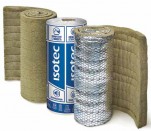Maximum Limit of Fire Resistance

Once Federal Law 123 on the “Technical regulations on fire safety requirements” came into force, the grading system of fire hazardous construction materials has changed. Within the fine-tuning of the Russian regulatory system and along with the requirements of the federal laws a number of other regulations that govern their application in heating, ventilation and air-conditioning systems have been updated. Thus, they have revised Code of Practice (COP) 7.13130-2009 on “Heating, ventilation and conditioning. Requirements of fire safety”, whereas construction norms and rules 41-01-2003 on “Heating, ventilation and conditioning” will be replaced by COP 60.13330.2012 on “Heating, ventilation and conditioning “ in the next edition.
According to the law it is essential that any heat-insulated has a fire danger class KM – starting from the safest KM0 up to the most fire dangerous class KM5. To define the fire danger class one has to take into account a number of features such as ignitability or smokegeneration capacity. There is another feature that has recently been added, i.e. the toxic level of combustion products that previously was not mentioned in the regulations and that is labeled with the letter “T”. Thus, the compounds that are considered noncombustible (NC) have received the lowest KM0 fire danger class.
And what do we say about other materials with a higher fire danger class? Previously insulating materials that were used in the service lines of buildings and structures would be included in the project on the basis of only 1 fire danger class feature, i.e. flammability class. For instance, products with Г1 fire danger class (low-combustible) were widely used in balanced systems of ventilation with the exception of fire-resistance rated air tubes. With low-combustible construction materials other fire danger features such as flammability, smoke-generation capacity, flame spreading were determined but they were not taken into consideration during the designing phase.
There is one important point that needs mentioning in this respect - one can achieve a lower degree of flammability “artificially”: for example, one can add fire-retarding materials to synthetic PE foam or rubber. As a result, in terms of the previous regulations (the combustibility class of the 2 products being Г1) both rubber and mineral wool that was laminated with aluminum foil equally indicate how dangerous (or safe) they are. In reality, though, this is actually not true. If one considers other fire danger features of synthetic materials, one can see that they have a В2-В3 flammability class and a Д3 smoke-generation capacity.
Full content of this issue you can read here
The full version of the article can be read in our printed issue, also you can subscribe to the web-version of the magazine
 Materials provided by Isotec Vostok Company
Materials provided by Isotec Vostok Company


